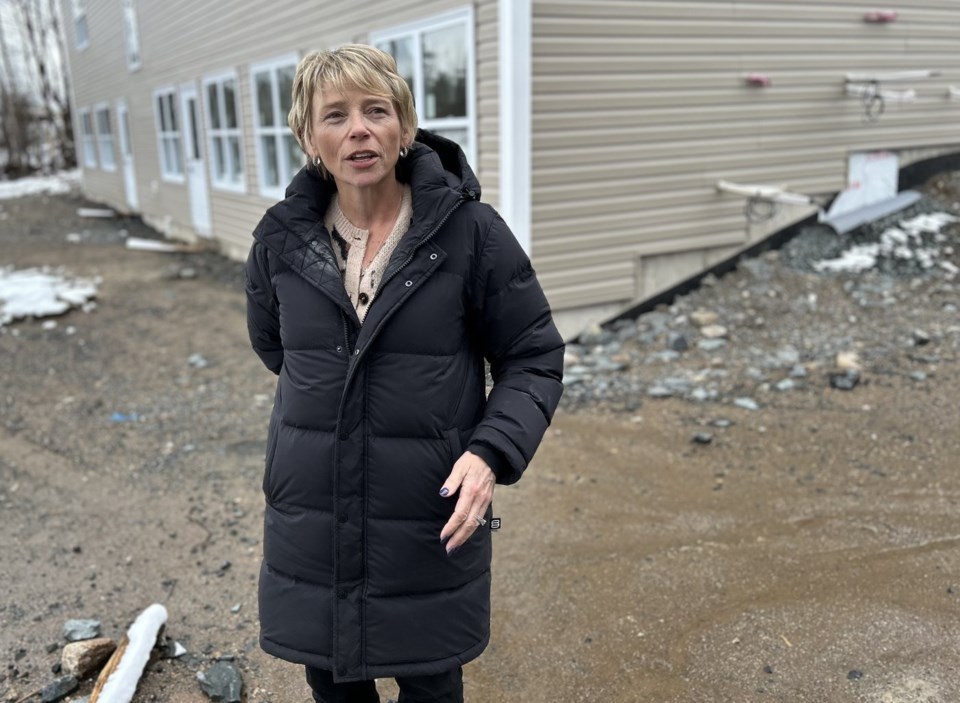HALIFAX — Almost two years after wildfires destroyed 200 structures, including 151 homes, in the western suburbs of Halifax, residents are anxious about the city's slow progress in creating more ways for them to flee if the flames return.
Standing behind her child-care centre, rebuilt after it was destroyed in the 2023 spring wildfire, owner Donna Buckland said in a recent interview she has a detailed emergency plan outlining how staff and 68 children would escape in case of fire.
But she's upset that Halifax doesn't have "a viable" exit route for the outer areas of her Westwood Hills suburb — where a wildfire erupted on May 28, 2023 — even as federal research has noted the region has been abnormally dry over the past year.
City council recently approved a $2.7-million emergency road exit for Westwood Hills, but it's to be located close to two existing exits — and about three kilometres away from Buckland's child-care centre.
Buckland and other residents in nearby communities who were interviewed by The Canadian Press say further changes are needed. They all have memories of the spring of 2023, when a heat dome and tinder-dry forests fed the blaze on the outskirts of the Nova Scotia capital. Homeowners, startled by the rapidity of the spread, encountered traffic jams while attempting to flee their neighbourhoods. More than 16,000 people were evacuated.
"It's not OK. The Halifax Regional Municipality has to treat this seriously. One emergency exit isn't enough. They need something on the back of the subdivision," Buckland said.
About 12 kilometres from Buckland's daycare, Julie Davies has similar fears and frustrations about limited escape options in the White Hills and Hammonds Plains subdivisions.
In the months following the fires, Davies learned the main evacuation plan for her daughter's school would only bring students to one of two, closely adjacent exits feeding into the main road. She predicted that if fires reached her area, both exits would likely be blocked by blazes, and the main road would be gridlocked.
The existing evacuation plan isn't safe, Davies said, adding that one alternative is to build an access road to an existing dirt road owned by Halifax Water, which exits the suburb in a different direction from the main road. "It's a temporary, emergency solution that could be part of a bigger plan," she said in an interview Tuesday.
Davies contacted the Halifax regional council for education, which told her they'd bring her suggestions forward to Halifax's Emergency Management Office. The council sent letters to the city's emergency office last January, but Davies said she's had no response to her ideas.
"After nearly two years of reviews and reports, the Halifax regional council for education, the municipality, EMO and the province still don’t have a viable plan that addresses the lack of emergency egress (for the school). I am beyond furious," she wrote in an email on Friday.
Roy Hollett, the acting director of the emergency management office, said in an email that an evacuation plan for the city's western suburbs "is expected before the end of the year."
Still, Coun. John Young, who represents the White Hills and Hammonds Plains area, says the responses to residents' worries aren't good or fast enough. "This isn't being viewed as a high priority, which it should be," he said.
Young said budgets for road work in the 2025-26 fiscal year should be funding connector roads between the outer edges of the series of suburbs, creating options for residents who need to flee wildfires.
He's also concerned about the fire hydrants in the Upper Hammonds Plains portion of his district, and their ability to provide sufficient water at high enough pressure to fight fires. The city's media relations department says in an email the system "as designed provides a limited level of fire protection to the community."
The email added that "discussions are ongoing" with the province, the water authority, and other agencies to upgrade the main water supply and install more hydrants.
However, "a concrete plan is not in place now," Young said in an interview on Monday.
Coun.. Nancy Hartling, who represents a portion of the western suburbs devastated by fires, said in an interview that she agrees with citizens over the urgency of finding solutions, adding that the topic is her top priority.
She said there have been a number of improvements to fire prevention and firefighting in the past two years, including the addition of four new firefighters to the area, along with added equipment and gear that can be used for wildfires. The Department of Natural Resources has also purchased equipment, improved firefighter training, and committed to replace its fleet of four helicopter water bombers over the next three years.
However, the frustration remains for Daniel Newbury, a resident of White Hills. He said he had hoped for short road extensions that would have connected his area to the neighbouring development of Indigo Shores, allowing residents an alternative way to safety.
"It's one study after another. They have meetings, they bring people in … they say people own the land privately and they can't get their hands on it, or companies won't release it for development," he said.
"You can't keep growing and growing the population and not provide the infrastructure that's needed."
This report by The Canadian Press was first published April 2, 2025.
Michael Tutton, The Canadian Press



